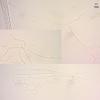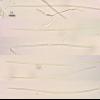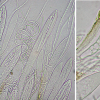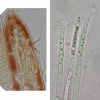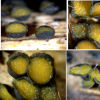
27-04-2023 06:49
Zuidland PeterHello all,I found a few of these small apothecia (

24-04-2023 23:39
Ismael WindThis species was growing on oenothera. Spores are

25-04-2023 14:13
Rob van KruiningHello,I found this white Propolis in Norway on a b

25-04-2023 15:56
Juuso ÄikäsThese little black pyrenos were growing yesterday

30-03-2013 21:25
 François Valade
François Valade
HelloA small yellow Bryoscyphus sp? on moss, Pleur

24-04-2023 19:26
Hi my friendsI'd like to know your opinion on this

24-04-2023 16:54
Yves AntoinetteBonjour, je pense avoir trouvé Tarzetta cupularis
This interesting species has showed up at Eriophorum vaginatum leaves in autumn, though i was collecting immature structures in summer, but they were not ready then. Finally after the first frosts it was found with fully developed structures. Hysterothecia densely cover very soft dead leaves laying at sphagnum surface.
The structures fit well with description in Johnston and Scheuer ("Lophodermium eriophori comb. nov." Mycotaxon 87 (2003): 489-492.).
Hysterothecia first pustulate, then outer layer bursting longitudinally or radially, enlarge to become turbinate, ellipsoid or more often circular in outline, hymenium yellow to orangish, outer surface black, to 1.5 mm by long axis, 0.5 mm high.
Asci clavate, with crozier, conical tip, inamyloid, 250 x 20 mk; paraphyses branched in upper part (tree-like), end branches circinate, 2.5–3 mk broad at upper part; spores needle-shaped, with loose sheath, with appendix at obtuse end, 150 (132–173) x 3.3 (2.9–3.9) (n=10).?

As you probably noticed in myco litterature, this species has very rarely been collected.
Brigitte Capoen and I luckily found it last year on October 4 in the main peat bog of SAnta Maria in the Somiedo paradise, (Spain, Asturias,)
Here it was Eriophorum angustifolium
I hereby join images I showed in my presenttaion at the Somiedo Ascomycota 2013 congress in last June.
The main features of your collection do suit ours.
Amitiés
Michel
that is interesting. I will look at other substrates, Er. russeolum as well, but untill now it was only at Er. vaginatum here. Could be abundant occasionally.
Nina.



